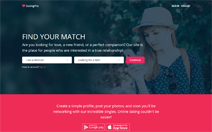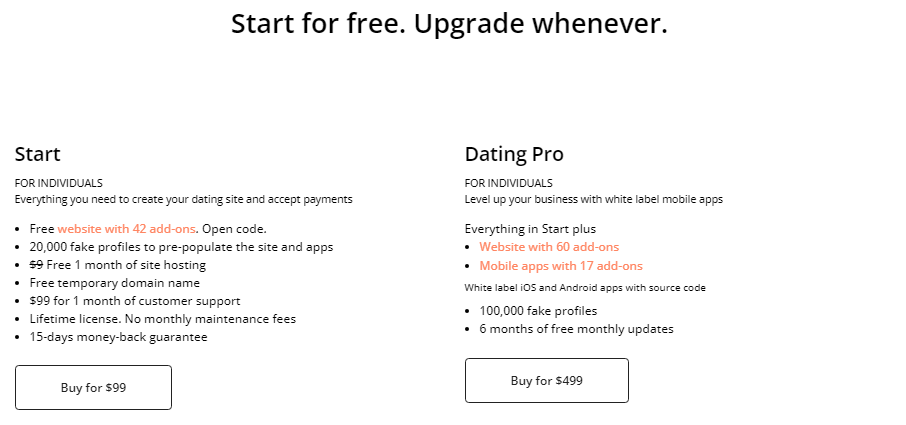Marketing Funnels Explained: Why It Matters and How To Build Yours
In the dynamic landscape of customer engagement, your business is discovered through a multitude of avenues—word of mouth, advertisements, and the ever-expanding realm of digital marketing.
However, the journey from initial interactions to turning prospects into devoted customers is intricate. How can you effectively guide a potential customer from brand awareness to making a purchase and beyond? The answer lies in crafting a strategic marketing funnel—a roadmap that outlines customer interactions and paves the way for a successful conversion journey.
In this comprehensive article, we will unravel the various stages of the marketing funnel, guide you through its creation, and delve into the tactics you can deploy at each pivotal juncture.
Demystifying the Marketing Funnel
The marketing funnel is a conceptual framework illustrating the path a customer follows, starting from their initial discovery of your business, brand, product, or service, all the way to the point where they take a specific action or make a purchase from you.
While the funnel can be divided into numerous stages. We, the Dating Pro team, divide the funnel into 7 stages. More details about them can be found in the article.
Most marketers adhere to three primary phases:
Top of the Funnel (TOFU): Awareness
At this initial stage, the goal is to cast a wide net and attract a diverse audience of potential leads. TOFU activities encompass strategies like blog publication, how-to articles, and active engagement on social media platforms.
Middle of the Funnel (MOFU): Consideration
The MOFU phase targets an engaged audience that possesses familiarity with your brand. Tactics here involve promoting webinars, encouraging participation in case studies, downloading ebooks, whitepapers, and research reports.
Bottom of the Funnel (BOFU): Conversion
In the final stages of the funnel, leads become more refined, yet more inclined to convert. These prospects are prime for making a purchasing decision. Activities encompass live demos, product trials, vendor comparisons, and customer references.

Unlocking the Advantages of the Marketing Funnel
📈 Foster Informed Growth: A marketing funnel strategically organizes tactics, providing clarity on which methods are effective at each stage. This data-driven approach enables you to capitalize on what works and adjust or discard what doesn’t, facilitating strategic growth.
❤️ Deepen Customer Insights: The funnel offers a profound understanding of your target audience and their triggers for purchasing. By analyzing their behavior at various funnel stages, you can pinpoint preferred products and impactful marketing strategies.
💵 Master the Purchase Cycle: Inventory turnover, influenced by average order value, plays a crucial role in the marketing funnel. Understanding the time products take to sell aids in optimizing strategies to meet desired timelines.
Tailoring the Marketing Funnel to Business Stages
The evolution of your marketing funnel hinges on business stage, product offerings, and prevailing trends. It’s a dynamic, evolving model that requires consistent attention and adaptation.
Two factors differentiate the funnel for established businesses versus newcomers:
- Brand Awareness: High brand awareness streamlines the customer acquisition process, allowing more focus on consideration and conversion. In contrast, lower brand awareness necessitates early hype generation and resource allocation towards garnering attention.
- Revenue: Your revenue determines marketing budgets. Greater revenue facilitates paid acquisition and inventory acquisition, while modest budgets steer tactics in a different direction.
Developing a marketing funnel involves several key steps. Here’s how you can go about it:
1. Understand Your Target Audience:
Before implementing a marketing funnel strategy, start by creating detailed buyer personas that represent your ideal customers. Gather data from sources like your website, social media, and third-party platforms like Google Analytics. Collect information on demographics such as age, gender, occupation, and income to better define your customer base. Consider conducting interviews or surveys with existing customers to gain insights into their preferences and experiences. This information will guide your marketing efforts and help you tailor your approach to reach your target audience effectively.
2. Uncover Your Target Audience:
There are various methods to uncover your target audience’s characteristics:
- Analyze cumulative purchase history across all customers.
- Utilize digital analytics tools to gather quantitative data.
- Conduct online surveys to collect direct feedback.
- Interview customers to understand their motivations and needs.
- Research consumer trends and behaviors within your industry.
- Perform a competitive analysis to study your competitors’ audiences.
Based on your findings, create detailed buyer personas that capture the common traits and preferences of your main customer segments.
3. Determine Average Order Value (AOV) and Consideration Timeline:
Your Average Order Value (AOV) represents the average amount customers spend on purchases. Calculate this by dividing your total revenue by the number of orders. For example, if your revenue is $2,000 from 100 orders, your AOV is $20.
AOV impacts the focus and duration of each stage in your marketing funnel. A higher AOV implies a longer consideration timeline, as customers take more time to decide on larger purchases. In this case, invest more resources into nurturing prospects throughout the consideration phase.
Conversely, a lower AOV leads to a shorter consideration timeline. Focus on acquiring new customers, as they tend to move through the funnel more quickly.
By understanding the relationship between AOV and the consideration timeline, you can allocate your budget strategically and emphasize the appropriate stages of the funnel to drive conversions effectively.
Marketing Funnel Stages:
Stage 1: Top of Funnel (TOFU)
At the widest part of the funnel, you engage individuals who are introduced to your products or business. This awareness can result from your marketing endeavors, word-of-mouth, online recommendations, or social media posts. While these people are aware of your existence, they may not yet require your products or services.
The strategy for each funnel stage varies based on your target audience and Average Order Value (AOV). Nevertheless, there are general actions suited for building awareness. Employing paid ads is an option, but concentrating on organic content and collaborating with micro-influencers during this phase ensures long-term success.
For instance, publishing blogs enhances traffic through SEO and nurtures those interested in your products, business, or industry. Establishing a social media presence allows potential customers to learn about your offerings, your brand’s personality, voice, and interact with you through comments, questions, and shares. Inviting them to join your email list, possibly with a discount incentive, keeps you connected even before they make a purchase.
When expanding your reach, consider partnering with micro-influencers. These influencers, with 10,000 to 100,000 social media followers, can align well with your brand, thereby increasing the chances of their followers resonating with your business.
Stage 2: Middle of Funnel (MOFU)
In this stage, you nurture the relationships formed during the awareness phase. When prospects enter the consideration stage, they recognize a need for your product, which could be to solve a problem, evoke joy, or serve as a gift. At this point, they are familiar with your business, its offerings, and might be connected through email or social media.
For prospects in the consideration stage, email marketing is highly effective. If they’re on your email list, they’ve already engaged with your brand to some extent. Email marketing provides an opportunity to craft a compelling narrative and brand building, connecting directly with customers in their personal inboxes.
It’s crucial to not overlook the consideration stage in favor of focusing solely on awareness and conversion. While some customers convert immediately after discovery, many require additional attention before making a purchase decision.
Stage 3: Bottom of Funnel (BOFU)
This is the decisive moment – you’ve created compelling social media content, sent impactful emails, and possibly collaborated with influencers. Now, the goal is to emphasize the benefits of your products, your business values, and unique value propositions to prompt prospects to make purchases.
Two potent tactics come into play at this stage:
- Customer Conversations: Customers usually reach out when they’re actively seeking to buy. Engaging in direct conversations builds trust, showcasing your brand’s character and credibility, and addresses any lingering concerns they may have.
- Paid Ads: Paid ads can be utilized at any stage of the funnel. However, at this stage, if budget constraints exist, it’s advisable to invest in ads. Prospects already recognize your brand and offerings, making ads a reminder of your unique value proposition.
By understanding these funnel stages, you can tailor your marketing approach to effectively guide prospects from awareness to conversion, and even inspire customer loyalty.
The Upside-Down Funnel: Cultivating Loyalty and Encouraging Repeat Business
Encouraging customers to return is undeniably one of the most cost-effective ways to enhance your average order value. “Acquiring new customers can be a costly endeavor for businesses. Ideally, customers should return for second, third, fourth, and subsequent purchases, thereby increasing their lifetime value,” emphasizes Amanda.
The Peepers team strategically integrates repeat sales into every facet of their business plan, starting with product development. They craft products with distinctive designs that set them apart from competitors, utilizing top-notch materials, and offering items at competitive price points.
Taking it a step further, John notes, “Our focus has also turned towards delivering an exceptional customer experience.”
In addition to delivering outstanding customer experiences, several effective marketing tactics can bolster the loyalty aspect of the funnel:
Experiment with Direct-Mail Campaigns:
Peepers employs direct mail to boost website traffic. The possibilities are vast here. Options include sending a postcard with an exclusive coupon code, a playfully branded sticker set, or even a handwritten note.
Encourage User-Generated Content:
After a customer completes a purchase, Amanda suggests sending an email requesting a photo of their purchase along with a review. In return, customers could receive a discount code for their next purchase. This not only generates fresh content for the awareness stage of the funnel but also entices customers back to the website while fostering loyalty through the use of discount codes.
Establish a Loyalty Program:
Another effective method to drive repeat business is through loyalty programs. These programs reward customers for making multiple purchases. For example, Girlfriend Collective, a clothing brand, operates a loyalty program that offers perks based on a customer’s lifetime value. As customers spend more over time, they unlock benefits such as free shipping, returns, and early access to sales.
Tracking Attribution through Data and Surveys:
After finalizing your marketing funnel, the last step involves ensuring precise understanding of the origins of your traffic. This knowledge guides your investment decisions.
Some analytics tools fail to consider content that nurtures customers up to the point of purchase. To overcome this limitation, Amanda suggests implementing post-purchase surveys. She recalls a client who was on the verge of giving up on TikTok as a marketing channel due to lackluster conversions shown by both the platform and Google Analytics. However, after conducting a post-purchase survey, TikTok emerged as a leading platform for new purchasers.
Amanda highlights, “We initially believed the average order value was notably lower compared to other channels across the business, yet it ranked second-highest.” The newfound insight prompted increased investment in TikTok ad spend, opening up an entirely new market.
In your post-purchase survey, inquire about how customers initially discovered your business. Include a comment box alongside answer options to allow respondents to provide accurate responses or additional context.
Unleash Fresh Opportunities with a Marketing Funnel
Each customer journey is distinct, and while the marketing funnel serves as a structured framework for marketing strategies, it may not always perfectly align with every individual’s unique journey. This variation is expected, as some customers seamlessly progress through acquisition, consideration, and conversion, while others might fluctuate back and forth before committing.
Ultimately, marketing funnels provide a clear roadmap for directing your marketing efforts, catering to both enthusiastic advocates and newcomers alike.






